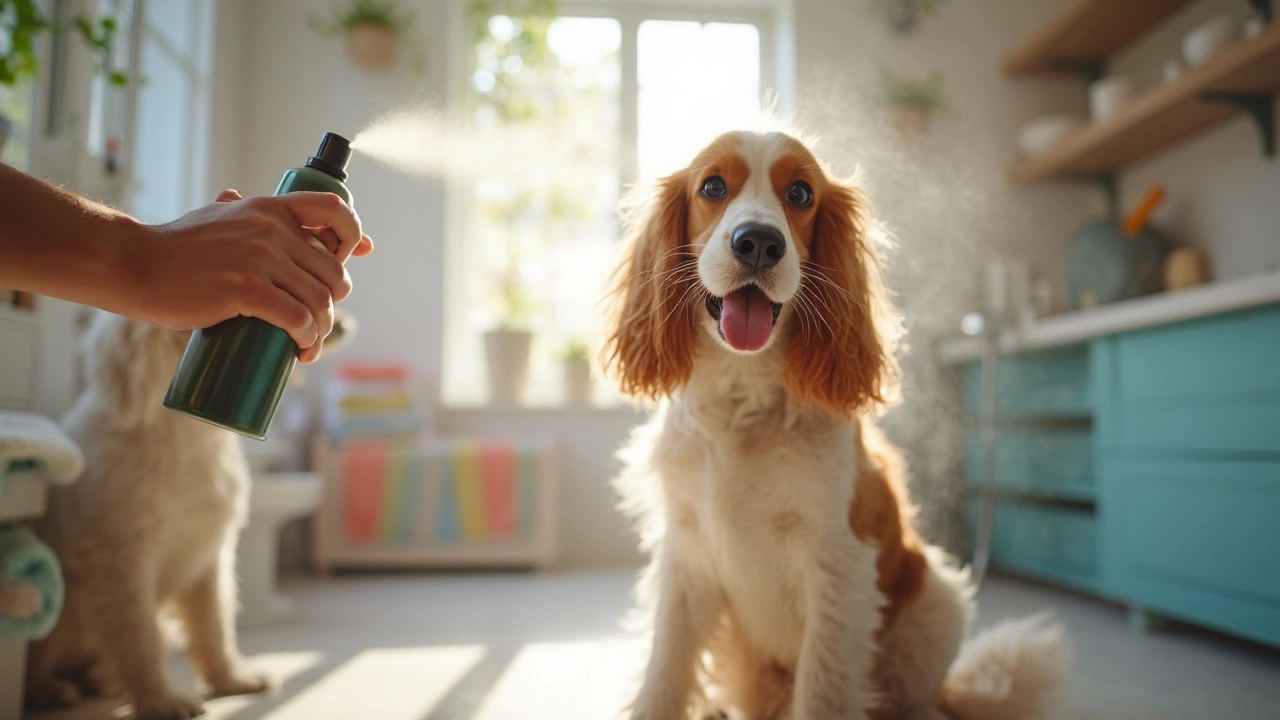Dog Shampoo: How to Pick the Right One and Use It Properly
Giving your dog a bath can feel like a chore, but the right shampoo makes it quick and painless. The wrong formula can dry out skin, cause itching, or leave a sticky coat that attracts dirt. Below you’ll find easy steps to choose a shampoo that matches your dog’s needs and how to wash without drama.
Why the Right Shampoo Matters
Dogs have skin that’s different from ours. Their pH is more neutral, so human shampoo can strip natural oils and cause irritation. A good dog shampoo balances that pH, cleans dirt, and leaves a light scent that isn’t overpowering. If your dog has allergies, a hypo‑allergenic or oatmeal formula can calm redness. For working gundogs, a de‑odorising shampoo helps mask game scents without harming the coat.
Choosing the Best Shampoo for Your Dog
Start by checking your dog’s coat type. Short‑haired breeds usually need a light‑cleansing shampoo, while long‑haired dogs benefit from a conditioner mix that prevents tangles. Look for clear labeling – words like “paraben‑free,” “sulphate‑free,” or “natural” indicate gentler ingredients. If you prefer a natural option, ingredients such as aloe vera, chamomile, or coconut oil are soothing and safe.
Don’t ignore any skin conditions. A flaky coat may need a medicated shampoo with zinc or coal tar. Hot spots or eczema often respond better to a shampoo with chlorhexidine or ketoconazole. When in doubt, ask your vet for a recommendation; they can point you to a product that won’t interfere with any medication your dog is on.
Price isn’t the only factor. A cheap shampoo might save pennies now but could cause a vet visit later. Quality shampoos typically cost a bit more but protect skin health, saving money in the long run.
Now that you have a shortlist, test a small amount on a patch of skin. Wait 24 hours – if there’s no redness or itching, the shampoo is likely a good match.
When it’s bath time, prep the area first. Fill a tub or sink with lukewarm water – too hot can burn the skin, too cold can shock the dog. Wet the coat thoroughly before applying shampoo; this helps the lather spread evenly.
Use a palm‑sized amount of shampoo and massage it into the fur, starting at the neck and working down to the tail. Avoid the eyes and ears – if soap gets in, rinse with plain water immediately. Give extra attention to areas that collect dirt, like the paws and belly.
Rinse well. Leftover shampoo builds up and can cause itching. Run water over the coat until the water runs clear – you’ll know you’ve rinsed enough when there’s no suds feeling.
If your dog tolerates it, you can finish with a conditioner designed for dogs. This step is optional but helps smooth long coats and reduces brushing time.
After the bath, towel‑dry gently and let your dog shake off the rest of the water. A quick brush helps remove loose hair and keeps the coat looking neat.
Remember, most dogs don’t need a bath every week. Over‑bathing strips natural oils. Aim for once a month for average coats, more often if your dog gets especially dirty or has a skin condition.
By picking the right shampoo, checking for skin issues, and following a simple washing routine, you’ll keep your dog clean, comfortable, and ready for the next adventure.
- Morgan Ainsworth
- 0 Comments
What Do Groomers Deodorize Dogs With? Best Products and Pro Tips
Ever wondered what the pros use to keep dogs smelling awesome after a grooming session? This article breaks down the real tools and products groomers reach for when deodorizing dogs. Discover different sprays, shampoos, and natural fixes that make bad smells vanish. Learn which ingredients are safe and which ones to avoid on your pup’s coat. Plus, get practical tips to keep your dog fresh at home, just like after a trip to the salon.
View More
